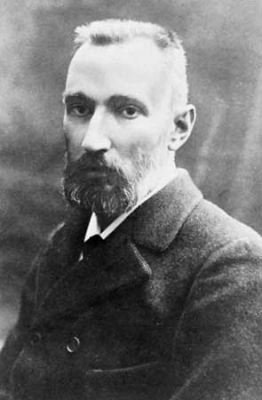
Pierre Curie was born in Paris, where his father was a general medical practitioner, on May 15, 1859. He received his early education at home before entering the Faculty of Sciences at the Sorbonne. He gained his Licenciateship in Physics in 1878 and continued as a demonstrator in the physics laboratory until 1882 when he was placed in charge of all practical work in the Physics and Industrial Chemistry Schools.
In his early studies on crystallography, together with his brother Jacques, Curie discovered piezoelectric effects. Later, he advanced theories of symmetry with regard to certain physical phenomena and turned his attention to magnetism. He showed that the magnetic properties of a given substance change at a certain temperature – this temperature is now known as the Curie point. To assist in his experiments he constructed several delicate pieces of apparatus – balances, electrometers, piezoelectric crystals, etc.
Curie’s studies of radioactive substances were made together with his wife, whom he married in 1895. They were achieved under conditions of much hardship – barely adequate laboratory facilities and under the stress of having to do much teaching in order to earn their livelihood. They announced the discovery of radium and polonium by fractionation of pitchblende in 1898 and later they did much to elucidate the properties of radium and its transformation products. Their work in this era formed the basis for much of the subsequent research in nuclear physics and chemistry. Together they were awarded half of the Nobel Prize for Physics in 1903 on account of their study into the spontaneous radiation discovered by Becquerel, who was awarded the other half of the Prize.
Picture Credit : Google




